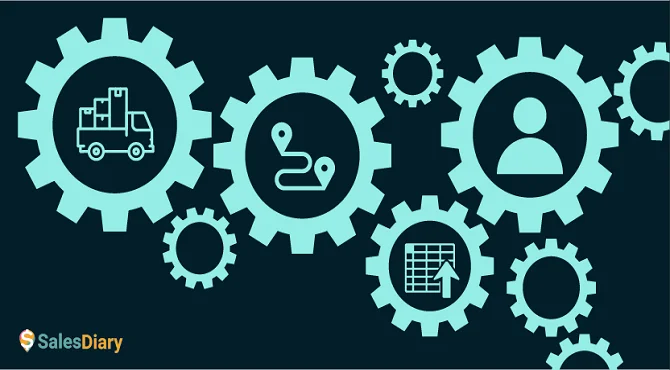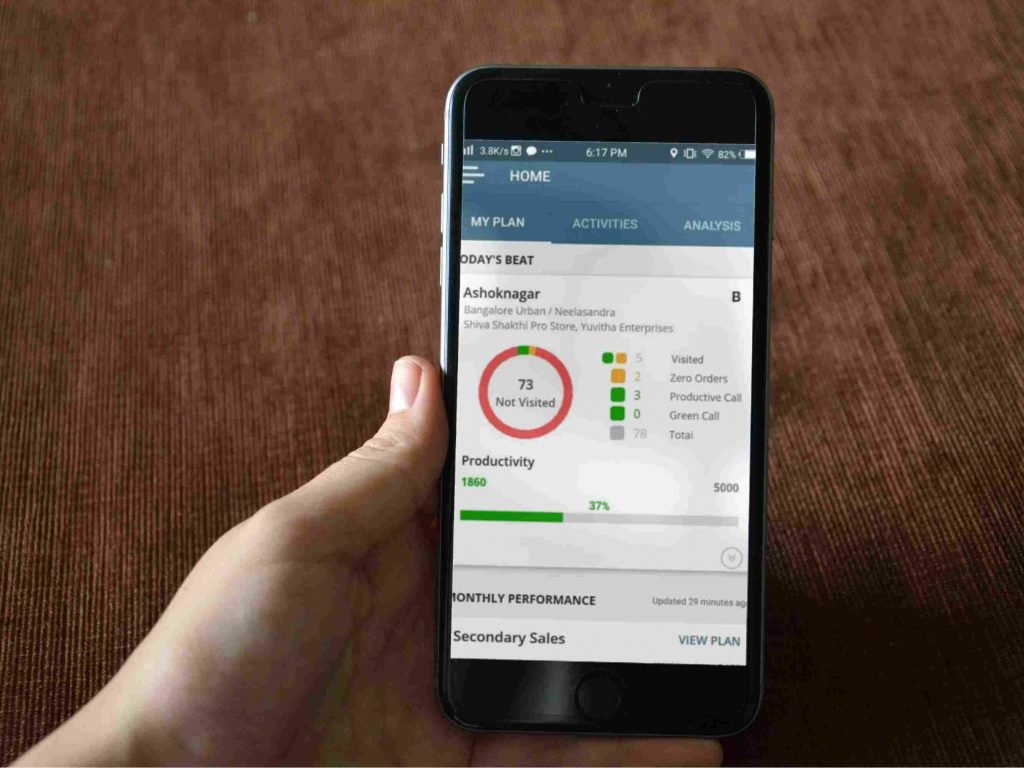
The demand for Sales Force Automation has been increasing over the past many years especially in the FMCG sector, for its ability to automate the complex and tedious business processes. With the growth in business and the introduction of various offers specific to the distributors and retailers, it has become a necessity to have a track of the orders, schemes, stock and the salesforce performance, so that the required area can be improved on.
With the demand for SFA in the market, obviously, the supply for the same has also been equally cropping up and now again the sales managers are forced to make the right decision on choosing the right kind of SFA. Although, there are a lot of challenges involved in implementing SFA, you need to know that each product has a unique factor to provide, there are few features that cannot be simply ignored.
Here are 10 Essential Features You Should Look for Before Implementing Sales Force Automation-
1. Monthly Sales Planner
By failing to prepare, you are preparing to fail.
― Benjamin Franklin
Your SFA can help you set the sail for your ship. People in sales are the smartest ones however as a team the impact is greater when they move in a unified manner.

Check if the SFA has the ability to incorporate Monthly Permanent Journey Plans(PJP), Unscheduled visits and Adhoc Routes to have a record of frequency of visits to a particular store or segment according to the company’s priorities.
It should also have the ability to make changes based on business dynamics. The feature should also be able to capture Key performance indicators in an actionable manner to ensure no deviation which in turn will increase your sales by 2x.
A good plan is a goal half done. Your work doesn’t end with planning, it continues on to execution which has been covered below.
2. Order Management
Gone are the days when orders would be shared on whatsapp or chat. While these chat tools are fast, they pose a big problem in keeping records. It also increases the dependence on people collating information from chats.
An SFA on the other hand puts the pieces of information where they belong. You reduce unnecessary involvement and let your team focus on their core activities.
An ideal SFA should be able to record primary, secondary, and tertiary Sales and also have all your orders, inventory, supplier and customer data synced and fully integrated on a single platform.
The system should be able to process orders from the backend real-time and be able to approve, edit, confirm delivery, etc.
Once you have your orders under your control, you can now focus on schemes and offers that you provide for your distributors/retailers.
3. Schemes Management
Managing schemes is not as easy as it may sound. Most of the sales veterans would relate to the complexity involved in framing trade promotions and schemes as they differ from one retailer to another.
Despite the complexity, it is one of the most important factors that contribute to the success of the business.
The SFA should be able to configure different type of schemes like Value Purchase Schemes (VPS) or Quantity Purchase Schemes(QPS).
Also, the system should be flexible and customizable to accommodate all the variability and their combinations of schemes offered to distributors or retailers.
With everything in order, it only makes sense for the SFA to be able to provide the details of performance analysis. Identifying the key areas is a significant process. Find out why in the next point.
4. KRA + KPI Tracker
The essence of strategy is choosing what NOT to do.
A matured SFA helps you identify core and non-core activities. It helps reward the core and discourage the non-value adding activities.
To be able to analyze Key Result Area and the Key Performance is pretty much a fundamental requirement for SFA. An ideal SFA should be able to accommodate your performance metrics and easily define the roles and responsibilities of the employees in the organization.
The reports generated should be easy to understand and analyze in such a way that it helps the team members improve their current performance as compared to the previous months.
Analyzing Key Result Area and the Key Performance can be complemented by Geo-tagging and Geo-Fencing.
5. Geo-tagging and Geo-fencing
It is not just about knowing where your team is, it is more important to know where they should be.
There are plenty of tracking systems available, however the loop is not complete till it tells you the deviations from the destination.

The SFA should have a Geo-fencing option to track their movements and receive notifications if they happen to cross the defined fence.
The system should also have a Geo-tagging feature so that whenever a client is attended by the employee, the work status is sent to the manager tagged with images, messages, audio, QR codes, videos or Geolocation.
6. In-built Distributor Management Systems
Your distributor is your strongest partner in business. Stock availability, Stock-outs, Product reach customer relations or financial hygiene are some aspects of your business which are invariably decided by your distributor.
The ideal SFA should have a Distributor Management system which can help an enterprise plan for the entire month, manage orders, deliveries, and payments on a single system.
It should give the option of planning routes based on outstanding payments. The system should also help in classifying distributors based on their turnover, credibility, location, etc.
7. Merchandising Modules
Merchandising reflects the personality of a company and its values. Your collaterals may be powerful but nearly 60% of the impact is lost due to poor execution.
The system should be able to execute merchandising decisions and stand apart from the competition. It should have the ability to record, share and analyze all merchandising activities across all retail outlets with geotagging, geo-fencing, images, text and survey forms.
Executing Merchandising Decisions can be made easier if you have updated information on distributed stocks.
8. Distributed Stock Update
Nearly 20% Food Products expire on retail shelf. Most businesses have an ‘unconditional’ return policy which has made it a common practice to consider expired stock as a cost to goods rather than a loss.
This is because most companies there is no way out to expired or expiring goods. Almost all expired goods are disposed and not sold. Timely information about expiring goods and their location can help you save millions.
A good SFA system is the one which can show a real-time live report of retailer and distributor stock.
The system must have the ability to show the stock movements over a period in detail including the details of fast moving products, outlet performance on the basis of stock and out of stock products.
9. Market Surveys
While your sales figures show your ‘today’ market feedback determines your ‘tomorrow’.
Though it is a common practice to take feedback while with customers, however to make it actionable it is required to be done in a systematic manner.
A good SFA should have fully customizable market survey forms which will make it possible for companies to capture information in the form of a questionnaire, images, and videos for a better planning and seamless execution.
10. Built-in BI tools
The system should have a custom built, drillable reports & dashboards for actionable analytics.

The business intelligence platform should provide an easy report builder with one click filters and interactive dashboard elements, allowing for easy customizability. Managing data and deriving actionable insights is must have for a good SFA system.
Here are some Bonus Points for you-
- Van Sales
If your business has ad-hoc orders, sporadic demand or daily supply items having a Van Sales Software may help you save millions and generate millions too.
A Van Sales software allows you to manage live inventory, orders, delivery, payments, returns and damages, all at a single place. And when the day ends it automatically settles accounts.
The system should be able to track total distance covered by van and productivity at each stop/outlet on a Map, with geo-fencing and real-time tracking.
The system should ensure correct stocking of van and ideal drop off at outlets with sale suggestions.
It should manage direct supply from the manufacturing unit to the retailers or the point of sale.
- Integrations
A good SFA should reduce the complexities and make the process easier. It should have an open APIs and plugins for commonly used Accounting Softwares, ERP systems and HR systems.
No complications should be involved in the integration, and it must be seamless and near real time.
Sales Force Automation implementation serves an organization in long-term. It is important to consider various factors from all the corners before choosing the right one.





